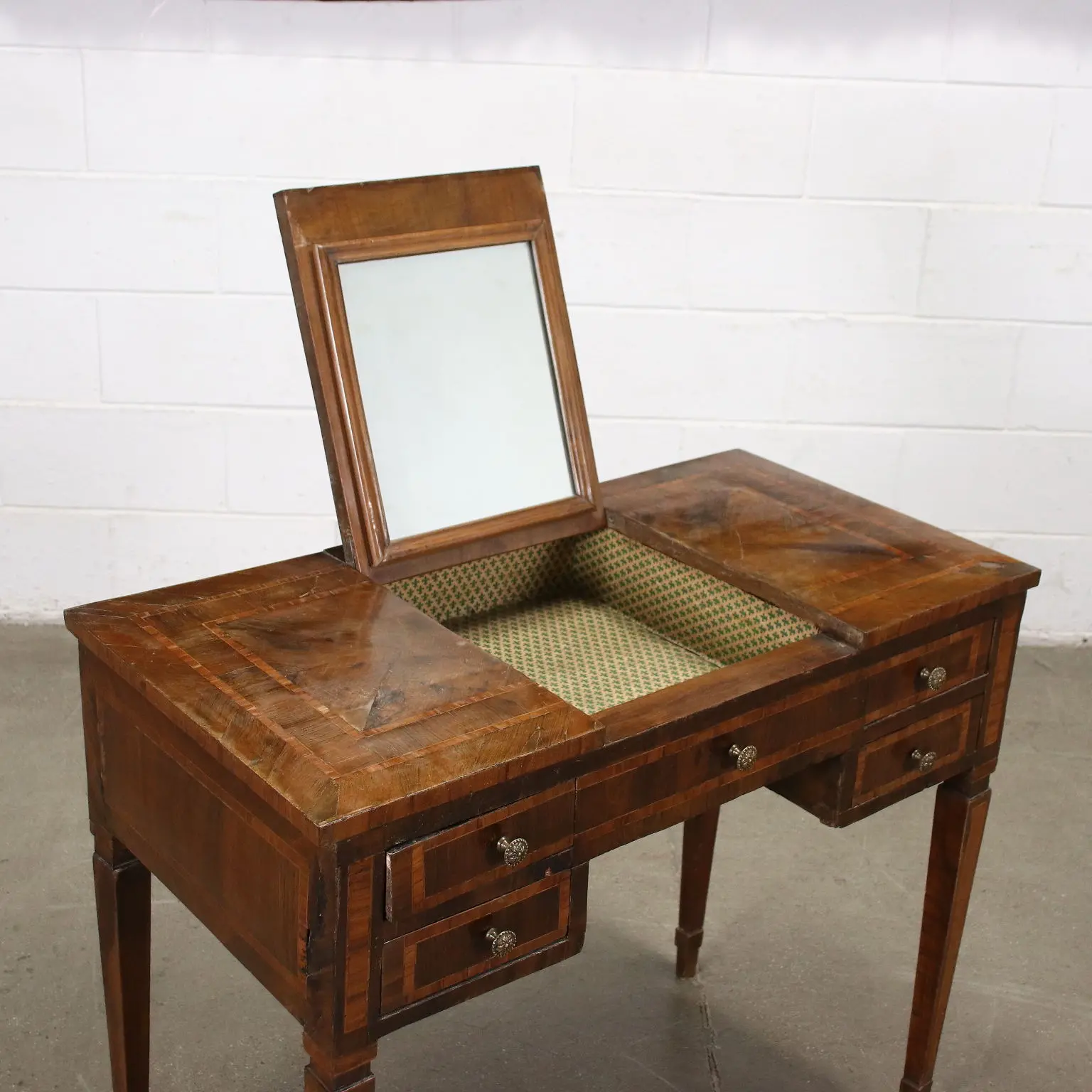Our catalogues
Neoclassical Style
The Neoclassical style developed in the second half of the 18th century in sharp contrast with the elaborate and sinuous forms of the Baroque , Rococo and Barocchetto . In those years, aesthetic taste was greatly influenced by two factors: one more historical and the other more cultural. The first was the discovery of important archaeological sites such as Herculaneum, Paestum and Pompeii and the enthusiastic dissemination of the models found there in printed books . From a cultural point of view, the new Enlightenment ideas began to take on more and more importance, hence the desire for order and rationality and the rejection of the baroque aristocratic magnificence that converges with the revaluation of classical models, especially Greek. Neoclassicism is a cultural and aesthetic movement that embraces all the arts : from painting to architecture, obviously passing through cabinet-making. It was in this era that antiques and the figure of the antique dealer were born and developed, as an expert in antique objects .

In what period and in which places did the Neoclassical style develop?
When we speak of Neoclassical style , we are normally referring to period furniture made above all in Italy starting from 1765, because different categories are used for other geographical areas. in fact, the Neoclassical period is varied and is divided into different styles, especially in France where the Louis XVI style and the Directoire style respectively represent the affirmation and apex of the realization of Neoclassicism , and the Empire style its epilogue.
What are the characteristics of Neoclassical style furniture?
Neoclassical style furniture , as mentioned, develops an aesthetic trend in stark contrast to the Baroque taste. We want to shun the theatricality and dynamism of that era because we seek the sober austerity of classical rationality. The shape of the neoclassical style furniture wants to be linear and straight, and the composition always seeks symmetry. The decorations are very accurate and refined, their quality increases considerably and the workmanship is refined, but their structure is very rigorous, respecting a very rigid geometric order. Bronze applications are frequently used to enliven the external walls but always in a disciplined manner. Neoclassical furnishings often have archaic elements, such as frets and acanthus leaves. Characteristic of neoclassical style furniture are the thin legs in the shape of an inverted pyramid, but they are not the only support model used by cabinet makers in this era.
Where to find Neoclassical furniture?
Many antique enthusiasts believe that Neoclassical furniture is the most beautiful and refined of all styles. Indeed it is difficult to imagine an environment that does not adapt well to a Neoclassical mirror or a living room that is not embellished with an important Neoclassical chest of drawers . If you too are fascinated by this elegant and refined style, you can learn more about FineArt and then we invite you to discover the wide choice available in our online catalogue. We update every week with new Neoclassical furniture pieces to be able to satisfy your every need. We have been present in the sector for over 20 years and, with the experience gained, we can advise you and accompany you in the purchase phase as few could do. Don't miss out on the exclusive neoclassical style furniture , click here !
To find out more about the Neoclassical style, we offer you in-depth articles written by our industry experts:
- Neoclassical, a style attentive to detail.
- The sophistication of the Piedmontese Neoclassical.
- The new taste in the Grand Duchy of Tuscany between Rococo and Neoclassicism.
- The last Lombard Neoclassicism.
- The Neoclassical taste of the Bassa Padana.
- The neoclassical taste in a small marble sculpture.
- Attention to detail in stylistic identification.












